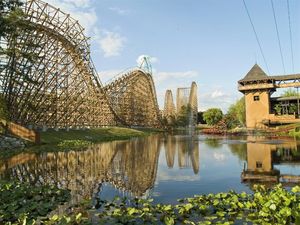Cornelius “Lee” Alig Encourages Cities to Redesign Their Communities —One Tree, One Block, One Conversation at a Time
By:
Zexprwire
August 30, 2025 at 05:15 AM EDT
Architect and Civic Leader Advocates for Everyday Involvement in Urban Improvement Indiana, USA, 30th August 2025, ZEX PR WIRE, Architect and long-time urban planner Cornelius “Lee” Alig is urging Indianapolis residents—and Americans more broadly—to think differently about how they contribute to their cities. With over four decades of experience shaping the built environment, Alig believes success starts small and starts local. “Design isn’t just about buildings. It’s about people, context, and purpose,” Alig says. “You don’t need a title or degree to make a difference in your neighborhood. You just need to show up.” Alig’s voice carries weight. As co-founder of Mansur Real Estate Services, he led the development of key Indianapolis landmarks like Market Tower, Lockerbie Marketplace, and Fall Creek Place, the latter earning national recognition from the Urban Land Institute. But his call to action isn’t about skyscrapers—it’s about sidewalk-level change. The Everyday Design Crisis America’s cities are facing pressing challenges:
Alig sees design as a practical tool to address these gaps—not just by professionals, but by everyday residents. “I’ve planted trees with my own hands. I’ve helped pack meals at Second Helpings. That’s real work, and it’s something anyone can do. You don’t need to wait for permission,” he says. Beyond the Drawing Board In addition to his architectural work, Alig chairs and contributes to civic initiatives. He has served on over 15 nonprofit boards, including the Indiana State Museum, Indiana Landmarks, and WFYI Public Media. He also hosted Design Minded Indiana, a podcast on WQRT 99.1 FM, amplifying the voices of designers, muralists, and community builders. “The podcast was never about me,” he explains. “It was about giving people a platform. People doing the invisible work that makes a city livable.” He also volunteers with Keep Indianapolis Beautiful, contributing to the planting of more than 3,000 trees per year, and with Second Helpings, a hunger-relief organization that turns rescued food into hot meals—over 4,000 every day. Show Up and Stay Involved Alig doesn’t want to inspire applause—he wants action. “Show up to a zoning meeting. Pick up trash on your block. Ask your neighbors what they want their street to feel like,” he says. “You don’t need to run a project to be part of it.” He believes real change comes from residents getting involved early—and often. “I’ve seen communities turn around because five people decided to care. That’s how Fall Creek Place started. It wasn’t a developer’s idea. It was neighbors asking: ‘Why can’t this be better?’” How You Can Take the First Step Lee Alig encourages people to start small but stay consistent. Here are a few ways:
“Cities are living systems,” Alig says. “You have to keep listening. Keep responding. That’s how we build something better.” More NewsView More

A New Leader at Six Flags: Is the Roller Coaster Over? ↗
Today 12:04 EST
Via MarketBeat
Tickers
FUN

Via MarketBeat

3 Reasons Baidu Could Be the Dark Horse of Global AI ↗
Today 10:48 EST
Via MarketBeat

Betting on the Backbone: 3 AI Infrastructure Stocks ↗
Today 10:23 EST
Recent QuotesView More
Stock Quote API & Stock News API supplied by www.cloudquote.io
Quotes delayed at least 20 minutes. By accessing this page, you agree to the Privacy Policy and Terms Of Service.
© 2025 FinancialContent. All rights reserved.
|